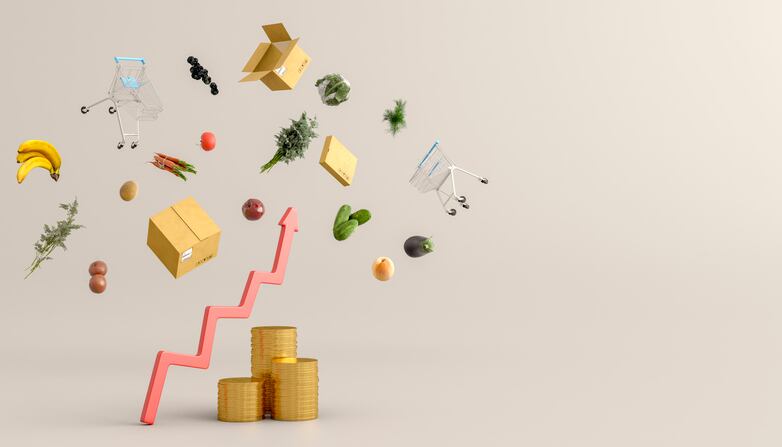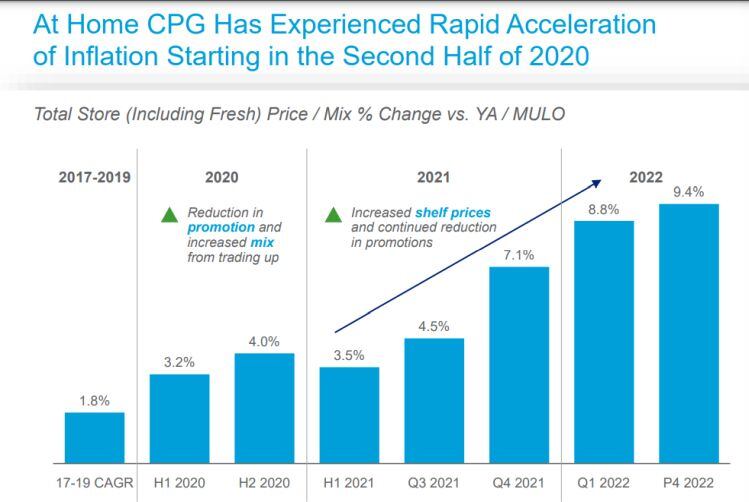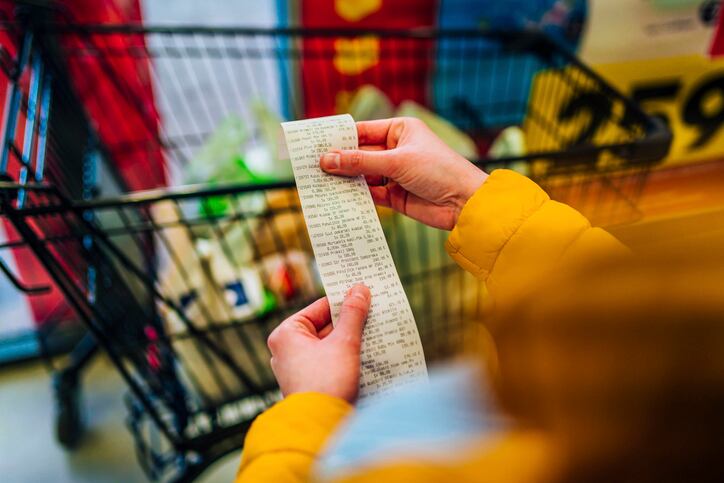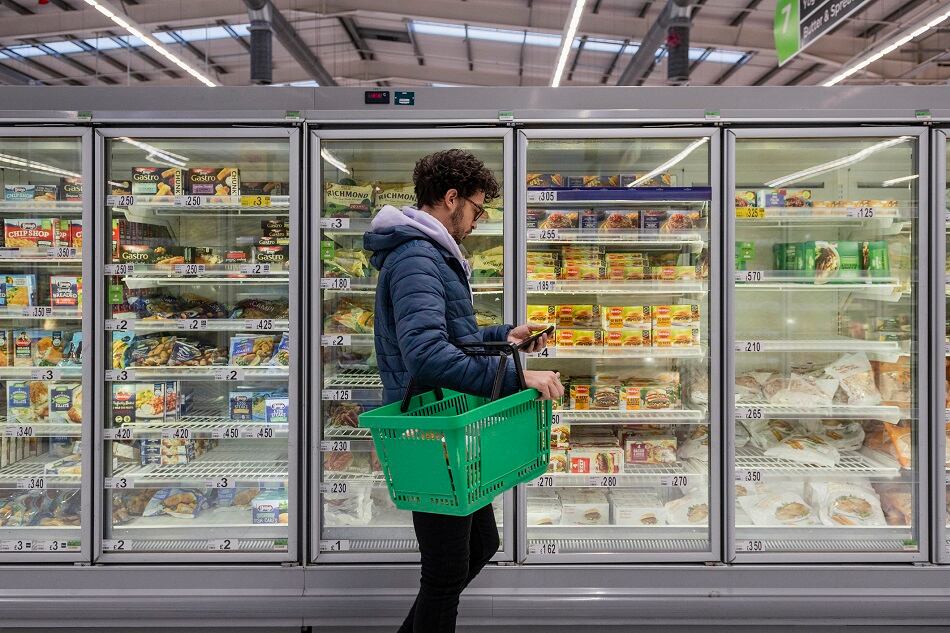In April, how much manufacturers paid for domestically made food rose 1.5% over March – marking the first time this year that growth has slowed, the Labor Department reported yesterday. According to the Bureau of Labor Statistics’ Producer Price Index for April, the month-over-month seasonally adjusted price for food began rising again in January after a brief dip in December – gaining 1.7% in the first month of the year followed by a 2% and 2.5% increase in February and March.
This slowdown mirrors that of all goods, but remains significantly higher, with the cost of all goods growing 0.5% in April over March, which saw a surge of 1.6% over February, according to the PPI. For the year, final demand prices for all goods is up 11%.
Within food, the greatest increase came from eggs, which skyrocketed a staggering 82% from March to April – a reflection of higher feed costs, and limited demand due to the spread of Avian Flu and other factors. Other categories that saw notable increases include fresh fruit and melons, which increased 8.5%, finfish and shellfish, which rose 5.1%, pork and grains, up 4% and 3.8% respectively.
While these increases led the pack, they were balanced somewhat across the index by a notable drop of 26.6% for fresh and dry vegetables a 2.6% drop in the price for beef and veal and a 0.4% dip in processed turkey, according to the BLS.
Transportation and warehousing increases take a toll
Also contributing to potential price increases for food at store shelves in the near future is a 4% increase in transportation and warehousing for finished goods in April over March, which builds on a 4.1% month-over-month increase in February.
Within transportation, a particularly sharp pain point for US manufacturers has been the cost of truck transportation of freight, due in part to a shortage of drivers, which has increased exponentially from a 2% increase in January to February and a 5.1% increase in February to March before slowing slightly to 4.4% in March to April, according to BLS data.
Rail transportation did not, however, see a similar decline, instead rising 2.5% from March to April after a 0.7% increase the previous month and 0.3% the month before that.
Likewise, the increase in transportation costs is partly due to sharply rising energy costs in recent months, although the Labor Department reported some reprieve on this front in April when it said the cost for final demand energy rose only 1.7% over March. This is the second consecutive month the increase in energy prices has slowed. The year started at a high of 7.2% from January to February, followed by a slightly lower increase of 6.4% in February to March. The index for gasoline also fell 3.2%.
As for the other half of the category, warehousing has been in higher demand since the pandemic began when many manufacturers switched from a just-in-time production approach to a just-in-case strategy that requires them to have more inventory on hand so they can continue to meet demand if supply chain or labor challenges hinder future production.
Prices for plastic, paper packaging rise
Packaging materials, which has been a sticking point for many CPG manufacturers in recent months, also rose sharply month-over-month – in some cases reversing a downward trend of previous months and in others building on increases.
For example, plastic resins and materials shot up 5.3% in April from March – a sharp deviation from a downward decline that began last year. From February to March, prices dropped 1.2% after a dip of 0.3% the previous month and a sharper decrease of 2.6% from December to January.
Plastic packaging products also increased 0.8% in April on top of a 0.4% in March, dashing hopes that a 0.3% decrease in February was the start of a downward trend.
Paper, paperboard and paper boxes and containers all also increased 1.5%, 1.9% and 2.2%, respectively in April – building on increases of 0.8%, 1.6% and 0.4% the previous month, according to BLS.




